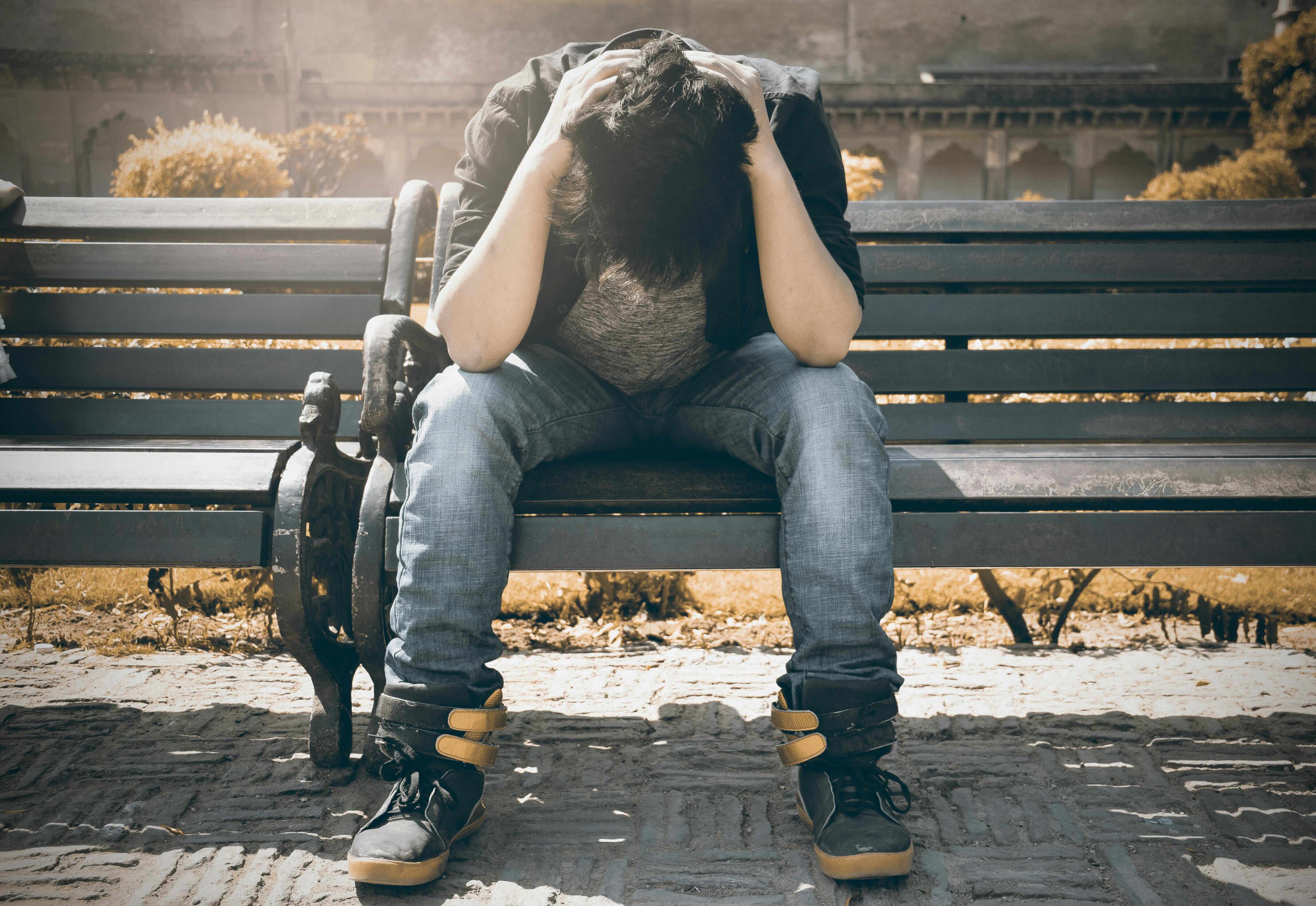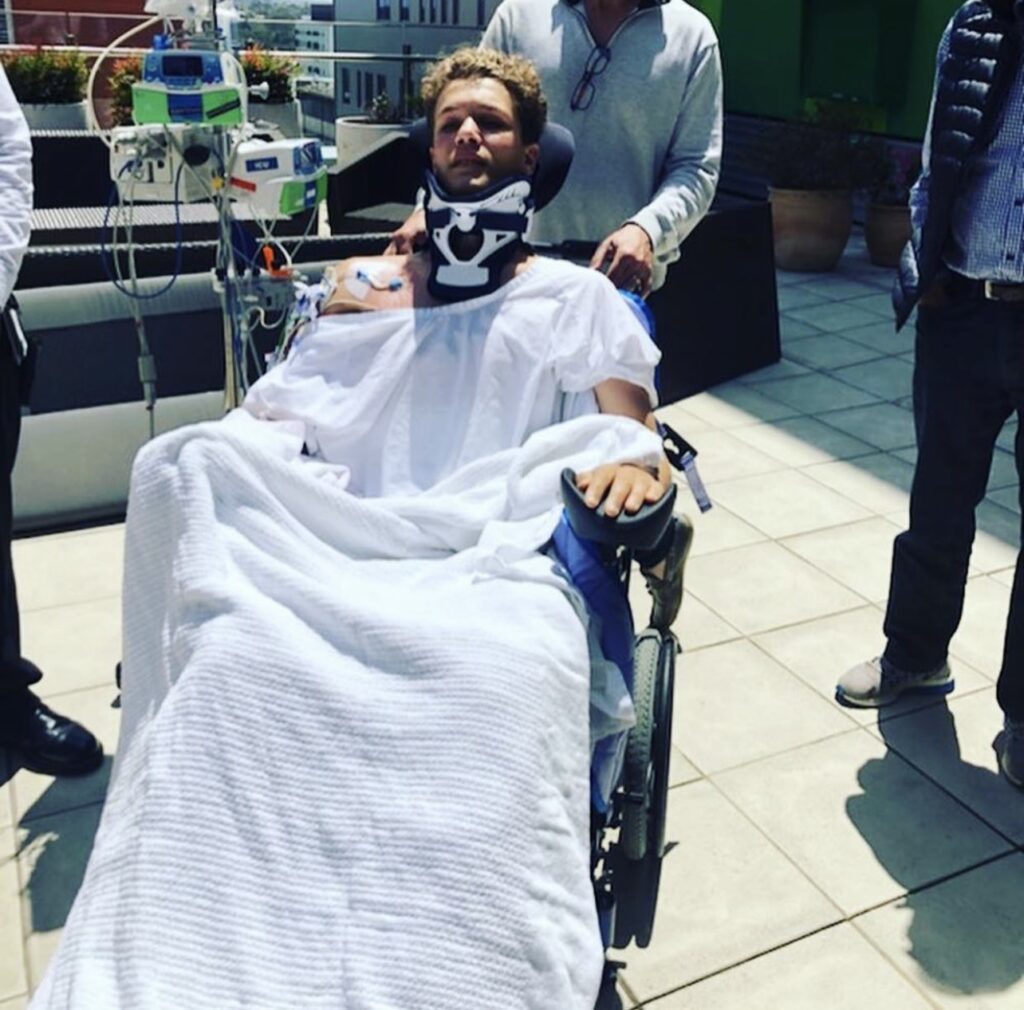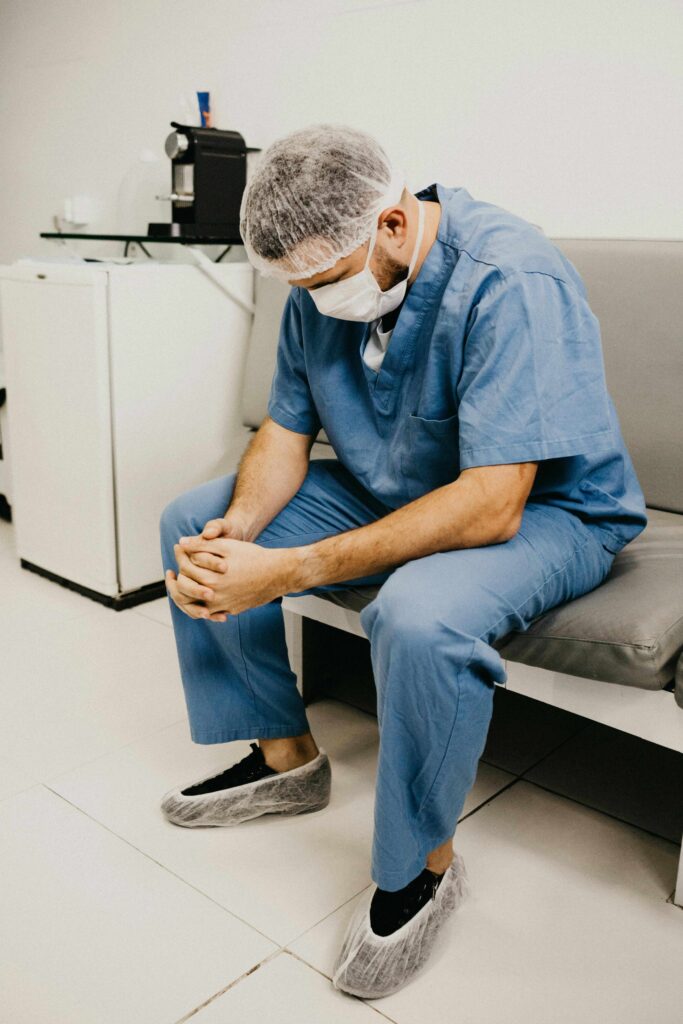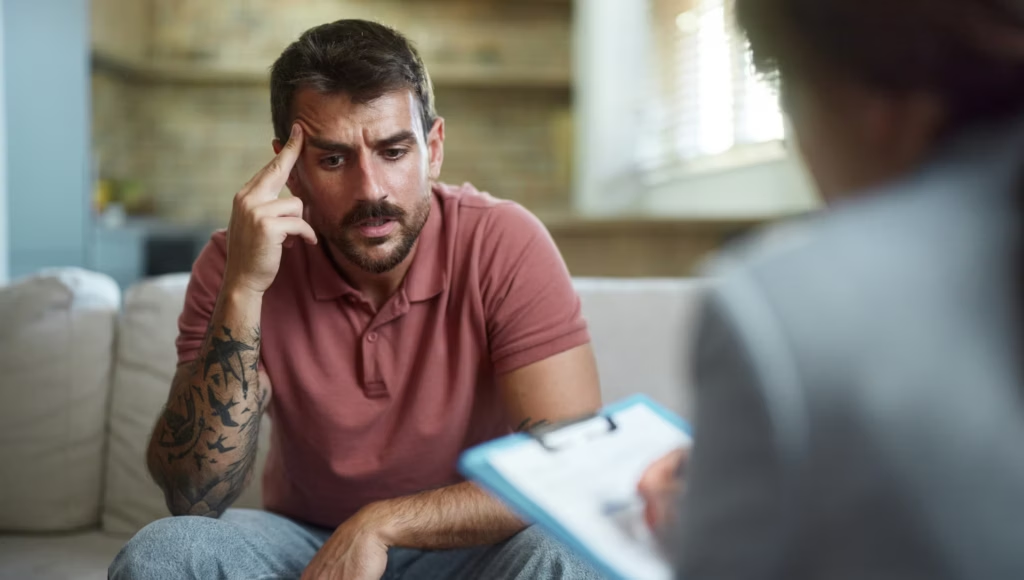IT WAS AT the height of Covid in 2020 that James took his life. He was a great friend, the kind of friend that comes along once in a lifetime. We spent countless hours talking about everything and anything. While his death wasn’t really out of the blue given his underlying health issues, a chronic illness and frustration with the state of his life, I couldn’t understand why I didn’t see it coming. Why did he not reach out to me, when we had this unique friendship spanning almost 60 years, one in which I was a heartbeat from his every trouble and fear? Why didn’t I read the signals of this impending tragedy? What had I missed? Maybe the closeness of our friendship clouded the truth, for when I look now I can see there had been signs for years that he might take his life.
Are we missing opportunities to save a life from suicide?
Like many friends and families of suicide victims I wanted answers and tried in vain to join the dots across our numerous conversations. I’m a management consultant, skilled in solving difficult strategic problems by using data and analysis. But I was struggling with this one.
I read every article and news story I could find; there is a glut of media coverage, websites and impenetrable academic studies on suicide prevention. After wading through it all, I had a profound realisation. One that had I reached it earlier, I believe would have equipped me to save him, at least on that occasion.
It is clear to me that we are missing numerous unique opportunities to save lives of close friends or loved ones because not only are we not aware of, or educated on, the pre-suicidal signals and behaviours but, most crucially, we are not educated about the many barriers that prevent us from reading these signals and responding with urgency.
Over 2016-19, prior to Covid, the Australian population grew at 1.3 per cent per year while the number of suicide deaths grew at 4.5 per cent a year. This means that despite the efforts being made today to reduce the number of suicides in Australia, these deaths have grown at 3.5 times the growth rate of the Australian population. Moreover, actual deaths by suicide are seriously underestimated. Among the reported deaths by road accidents, drug overdoses and drownings, premeditated deaths due to suicide can’t be identified.
Doesn’t this inexorable growth in the number of people taking their lives suggest that the current approach of expecting those at risk to come forward and seek help is insufficient? We are not winning the battle to prevent suicide from growing. Lifeline in their recent report on prevention of suicide wrote, “We don’t have a national suicide prevention strategy.” And “despite… the world having specific suicide prevention strategies, including Australia and many decades of research and investigation… of the causes of suicidal behaviour, there is still limited high-quality, defensible evidence (of) the most effective and efficient approaches for preventing suicide.” Yes, the provision of many current wellbeing services, call centres and websites remain important, but we have to do better than expecting those at risk to voluntarily come forward, and then simply ask “Are you okay?” This is not enough to expect that a cry for help will follow.

A fresh approach to suicide prevention is needed
We must do more than flash websites and phone numbers on TV screens or include them at the end of news articles and expect those at risk to raise their hands, come forward and seek help. That’s akin to trying to find the needle in the haystack. The stigma and shame of being suicidal prevents those hands being raised, and as is often the case, it can be too late. Afterall, 60 per cent of all suicides occur on the first attempt without any or significant exposure to medical and wellbeing practitioners.
Instead of searching for that proverbial needle in a haystack, what if we could empower that haystack to tell us if it has the needle? We need a major refocus on those closest to the person at risk; namely, close family and friends who are on the ‘frontline’; the first response team. But this approach will only succeed if these frontline response teams are educated and made aware of the horrible facts of suicide, can recognise pre-suicidal symptoms and behaviours, and most importantly, are aware of the many barriers that prevent us from responding with urgency, not just concern. Perhaps a program like CPR but mandated and more nuanced in its delivery.
After the loss of my close friend, James in 2020, the efficacy of this new approach was tested recently when a close friend and former colleague, John, reached out to me. He was seriously depressed and was seeing his life’s ambitions and economic circumstances evaporating before him. The sense of shame and hopelessness was palpable. He apologised for coming to me like this. Thankfully, I responded with urgency, not just concern. I now had to practise for the first time what I had learned.
After an initial discussion, I asked John the difficult questions: “Are you getting help? Are you on medication? Are you taking the medication? Are you thinking of harming yourself?” He was not taking his medication and was experiencing suicidal thoughts. Fortunately, this time, my acute awareness of pre-suicidal behaviours and of the barriers that unwittingly blinded me previously with James, were available to me. With John’s agreement, I took him immediately to hospital emergency. This time I was able to guide him to a safe outcome. He felt valued by the efforts made. It wasn’t easy. All situations are different.
Breaking the silence… and saving a life
If we change our approach to suicide prevention, we can ‘Break the Silence’ and save lives that are currently being lost to us. Several elements are key to this approach.
First, we need to leverage the power of family and friends closest to the person at risk. A spouse or partner, parents, best friends, or siblings and many others who have the most contact with this person. Is it a stretch to imagine that the majority of us have say, five close family members and five close friends? These ten people closest to the person at risk and in a position to observe and respond firsthand must be made aware of the symptoms and behaviour of pre-suicidality and raise an alarm.
To illustrate this leverage, with over 3,200 suicides recorded in Australia, this means that with education and increased awareness we would now have over 30,000 nearby friends and family to help pull those high-risk individuals back from the edge. It would take only one of the ten to raise an alarm. Based on US estimates applied to Australian data, there are an estimated 94,000 Australians who attempt to take their lives each year. That means we now have close to a 1 million close friends and family in a position to observe this suicidal behaviour and ask the question: “Are you thinking of harming yourself?” Wouldn’t that save lives?
Second, we must unmask the horrible facts on suicide. For first responders to be effective we need to confront the terrible tragedy of suicide in Australia; and educate ourselves to recognise the signals and behaviours shown as pre-suicidal. We also need to break down our barriers to acting with urgency. This awareness will require a systematic and mandated education program that is available and delivered to all families and individuals across Australia; the years during school and parenting seems the obvious and most effective place and time to get started.
Suicide is the number one cause of death excluding natural causes in Australia, two and a half times the national road toll. It is the leading cause of death among 15- to 45-year-olds. One in five 25- to 45-year-olds die by suicide.
People who have made a previous attempt on their life are 30 times more likely to eventually commit suicide than those with no past attempts. If you knew these tragic facts, wouldn’t it increase your sense of urgency to help an at-risk friend or loved one? Suicidality doesn’t have to be a death sentence; people move through this period successfully; personal and family circumstances can change, medical conditions can be treated or at least ameliorated, and anxiety and depression can be medicated.
Thirdly, we need to recognise and understand pre-suicide signals and behaviours. We all see the symptoms, signals and changes in behaviour of a close friend or family member. They are in plain sight. The problem is that we don’t recognise those signals as pre-suicidal or realise the potentially imminent and tragic outcome they suggest.
The strongest predictors of suicide are chronic depression and anxiety. So don’t be afraid to ask, “are you seeing a doctor, are you on medication for this and taking the medication, and are you thinking of harming yourself?”
James spoke of reducing then going off his antidepressant medication. He talked of suicide for resolving his health and personal problems. I was aware of his thinking and previous attempts. He told me of visiting known suicide sites. Clearly now, this behaviour was a major red flag I missed. Despite our close friendship – which in itself can be a barrier – he didn’t reach out to me for help before his final attempt! I believed he would.
Perhaps the clearest and strongest pre-suicidal indicator occurred several days before his death. He showed a decreasing ability to think logically, associated with panicky behaviour, known as constrained cognizance. This creates a form of tunnel vision and distortion of the brain and thought processing. In the days before suicide, the brain begins a process of narrowing possible options for coping or seeing a way out of a crisis. The huge burden of chronic illness, and a strong sense of hopelessness and helplessness, accelerated his urgency to take extreme decisions and actions, meaning he could see no way out of his daily torment.
Fourth, the greatest problem in reducing the number of suicides in Australia is our limited understanding of the barriers that prevent us reading potential suicidal signals. Being acutely aware of suicidal signals is important but it is the barriers that stop us responding with urgency. Current initiatives in Australia for reducing suicides appear silent on understanding these barriers.
Over the many months and years before he took his life, James, like many people struggling with suicide ideation, was dismissive of the default “Are you okay?” question. The question is, in itself, a barrier, a cliché or trope, and is not enough to elicit a helpful response. In addition, even to close friends and family, the shame and the stigma of talking about thoughts of suicide shuts down this conversation.
My own bonhomie and banter, typical of Australian mateship, created its own barriers. At times, my response to James amounted to little more than a fleeting discussion of his very troubled life, along the lines of, “geez mate, sorry to hear that, but you’re OK now, right?” No request for help ever came from him, despite his obvious suicidal thinking, uncompleted attempts and ongoing health and personal troubles.
Perhaps the most enduring barrier that stopped me from raising the alarm and responding with urgency was my different perception of risk compared to James. You see, unless we were wired the same, had similar life experiences and understood and shared the same perceptions of risk, then my interpretation of what he had done or was thinking of doing could never be aligned with his. As a result, I did not understand that his behaviours and signals were pre-suicidal. My unquestioned belief was that he would talk to me first. To me, it was inconceivable that someone I thought I knew so well would actually take his life. This was a massive barrier to responding with any sense of urgency.
On the Friday before he took his life the following Monday morning, James’ pre-suicidal behaviours were strongest and his silent cries for help were loudest. But, to respond with urgency, I needed to read his signals and break through my own barriers. I missed the greatest chance to make an impact during the Friday coffee we shared. His panicky behaviour and inability to choose the right options, to solve problems and ‘tie up loose ends’ caused further frustration for him.
Still there was no tangible cry for help. And there was no adequate understanding of the situation on my part that would have allowed me to ask, “I see that you are very distressed… are you thinking of harming yourself?” Sure, I showed great concern for his apparent pain, but concern is not enough; there was no urgency in my response. I believed he would act on my ‘sound’ advice that he must “get back on his medication” for depression, and that he should “get a second opinion” for his chronic eye problems. The greatest barrier on that day was my implicit belief that I was actually helping him, that he would follow my advice, that he would reach out to me before harming himself, and that he would not take his life. If I knew what I am now aware of, I should have taken him immediately to hospital emergency.
On my final phone call to James on the following Monday morning he took his life, I asked him if the new medication for his chronic eye illness had worked. I remember his curt yet strangely calm reply, “No!” Was his mind made up? Was he feeling relief about the step he was about to take to end his torment? The barrier for me was believing he could not possibly take his life without reaching out to me first. Even without that barrier, there were few signals that morning.
He had made his decision and didn’t want to or couldn’t be stopped. It is almost too late to intervene unless you understand the contrast between this sudden calm compared to the previous Friday coffee. By Monday, his earlier suicidal symptoms were suppressed. There was none of the previous anxiety, panicking and incoherent thinking that morning. He showed a much lower concern for his existing chronic health and personal issues. He had the opportunity to reach out to me but didn’t.
Finally, impose yourself and respond with urgency. It is up to each of us who is closest to challenge the person at risk. As an ambulance driver working in Sydney’s notorious Gap said, somewhat ironically, after his co-driver suicided: “I should have imposed myself on him more.” But an urgent response and direct support will only come if we immediately recognise the signals and behaviours.
Remember, you may not have a lot of time to intervene and respond. Research shows that the time between deciding to suicide and actually suiciding is usually a matter of minutes or at most hours, making intervention very difficult. However, you have more time to intervene during the pre-suicide period when strong signals of suicidality can be seen before the actual suicide. Over this period, suicidality and actual suicide can be as short as 24 hours, particularly among younger females. Significantly, with this group there is often no underlying depression or medical history from a prior attempt. For them suicide is triggered by a sudden personal crisis or event due to family and relationship problems. The signals are more driven by a sudden crisis and are extremely hard to see compared to those with lingering depression and chronic pain.
In contrast, for those with underlying depression and severe anxiety, the duration between the initial idea of suicide and actual suicide can be months, if not years, among older males, like my friend James. Underlying depression and health issues are common for this group, along with a past history of medical help, erratic emotions, and poor daily functioning. Signals and behaviours among this group are much easier to see and respond to, assuming your actions aren’t blocked by your barriers. Suicide is generally not triggered by a crisis or an event because they are in a persistent state of suicidality – it’s not that they want to die, it’s that they don’t want to live any more. I often wonder about James’ tragedy and am reminded of the rare survivor jumping from the Golden Gate Bridge who said, “From the moment my hand left the railing, and I started to fall, I had an instant regret. I didn’t want to die! I’ve made the greatest mistake of my life.”
Now that we understand the foreboding signals and can avoid the barriers for responding urgently, what should we do? Getting to this point, the steps from here are common sense but lifesaving.
Listen, acknowledge and confirm: It is now time to step up and engage. Listen carefully to what your friend or loved one is saying and feeling. Acknowledge what they have said to you. Make it clear that you know they are suffering. Confirm the situation along the lines of, “You appear stressed and anxious… are you thinking of harming yourself? Have you sought medical help? Are you on medication? Have you been taking this medication?”
Keep them safe and act: Reduce access to lethal items or places. Then respond by laying out a short-term plan that they are willing to follow. As with John, this may mean strongly encouraging them to go to hospital emergency. Stay with them during this immediate transition to a safe place and medical assistance.
Help them reconnect: Identify and engage other close friends or family members such as parents, siblings, spouse, flat mates and school friends who will have multiple contact opportunities to help and monitor their recovery over the next few days and weeks.
Follow-up and check regularly: Ensure that an agreed plan is put in place. Follow-up at close intervals to ensure the plan is followed. Provide your friend or loved one with crucial phone numbers of people to call. Ensure medication and medical support are in place. Make an agreement with them that you and others will monitor their mental state and comfort. If they feel suicidal again, the plan should include specific ‘distracting’ activities, like going for a run or a walk, going to the golf driving range, visiting or calling friends, grocery shopping and other errands. Check regularly that they are taking their medication, meeting scheduled appointments and are under close care. It’s not easy to do this – it’s essential.
Where to from here?
Can we mandate the systematic education of these five imperatives to ‘Breaking the Silence’ on suicide? While schools and students’ parents are the obvious starting point, ultimately such a program should extend beyond the classrooms to all parents and families, sporting and recreation clubs, and workplaces.
This approach to reducing the number of suicides is powerful because it focuses and relies upon the people closest – the first ‘response team’ – around a potential victim and does not rely solely upon the victim himself. The direct, instant and sustained involvement of close family and friends drive it. But, for success, this approach requires we are all educated and made fully aware of the symptoms of suicide and the barriers that prevent us from responding with urgency.
For any one of us, one life saved would be a lifetime achievement.
Larry Cornell is a management consultant based in Sydney
Related:
New Stats Are In About Suicide – And Men Are Still Most At Risk
The Rock Just Opened Up About Mental Illness and Suicide
















